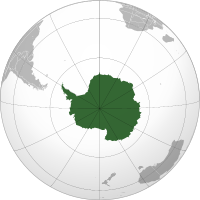
Photo from wikipedia
The existence of a trans-boundary population of the snow leopard (Panthera uncia Schreber, 1776) that inhabits the massifs of Tsagaanshuvuut (Mongolia) - Tsagan-Shibetu (Russia) was determined through non-invasive genetic analysis… Click to show full abstract
The existence of a trans-boundary population of the snow leopard (Panthera uncia Schreber, 1776) that inhabits the massifs of Tsagaanshuvuut (Mongolia) - Tsagan-Shibetu (Russia) was determined through non-invasive genetic analysis of scat samples and by studying the structure of territory use by a collared female individual. The genetic analysis included species identification of samples via sequencing of a fragment of the cytochrome b gene and individual identification using a panel of eight microsatellites. The home range of a female snow leopard marked with a satellite GPS collar was represented by minimum convex polygon method (MCP) 100, MCP 95, and fixed kernel 95 methods. The results revealed insignificant genetic differentiation between snow leopards that inhabit both massifs (minimal fixation index [FST ]), data that testify to the unity of the cross-border group. Moreover, five common individuals were identified from Mongolian and Russian territories. This finding clearly shows that their home range includes territories of both countries. Additionally, regular movement of a collared snow leopard in Mongolia and Russia confirmed the existence of a cross-border snow leopard group. These data support that trans-boundary conservation is important for snow leopards in both countries. We conclude it is crucial for Russia to study the northern range of snow leopards in Asia. This article is protected by copyright. All rights reserved.
Journal Title: Integrative zoology
Year Published: 2019
Link to full text (if available)
Share on Social Media: Sign Up to like & get
recommendations!